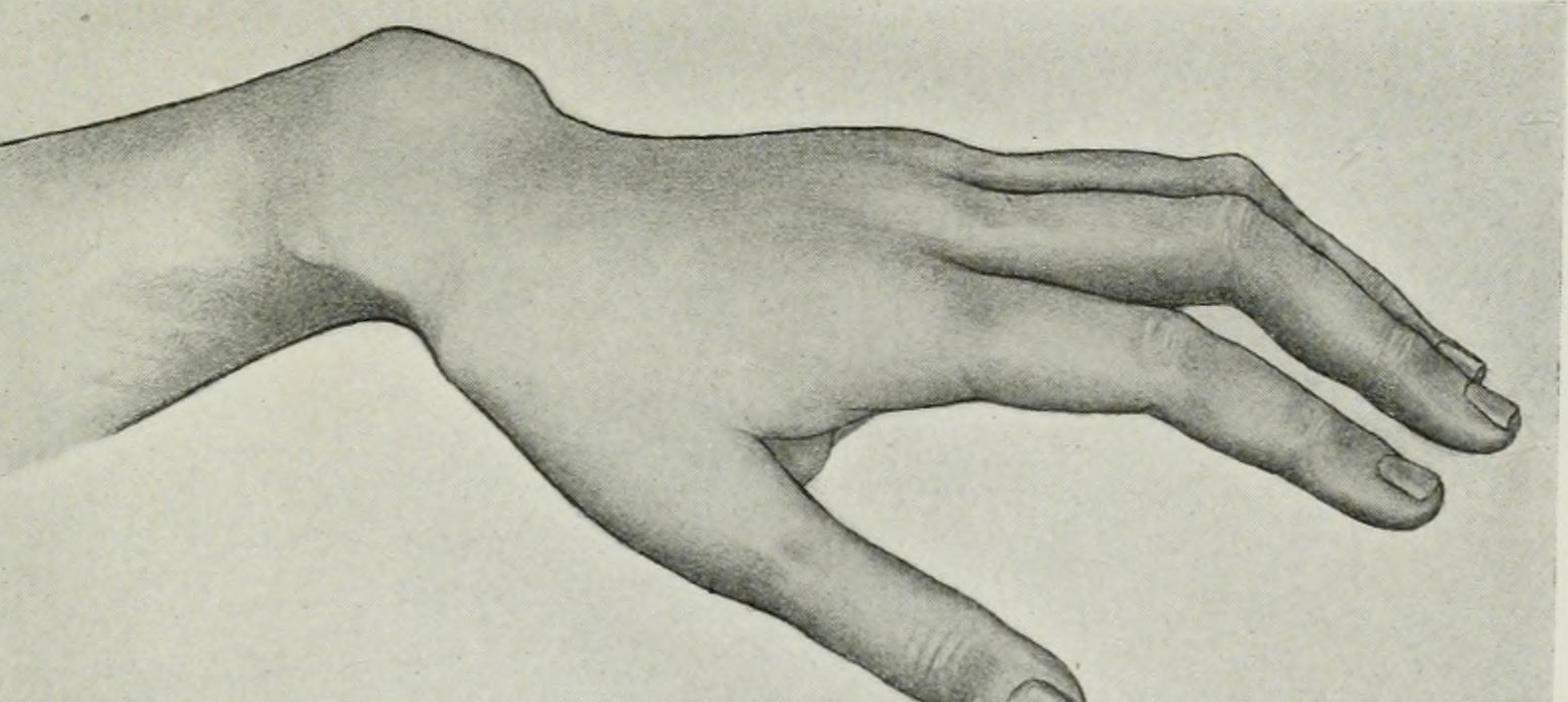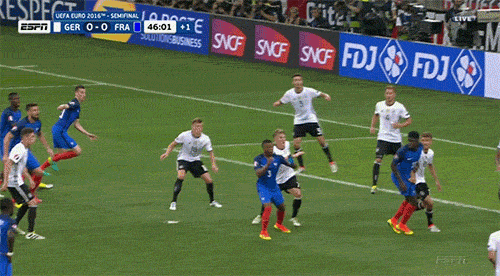By Bobby Warshaw

In the 46th minute of Germany’s Euro 2016 semi-final match against France, Bastian Schweinsteiger challenged Patrice Evra on a header off of a corner. Evra’s header ricocheted into Schweinsteiger’s hand. The referee called a handball and pointed to the spot.
The Laws of the Game only reference the concept of the handball once, on page 36: A direct free kick is awarded when a player other than a goalkeeper in his own box “handles the ball deliberately.” We are left to wonder how the referee should decide if it was deliberate. By historical precedent, we seem to have decided that if a player puts his arm in an “unnatural position,” then he is deliberately putting his arm in a position to stop the ball if necessary. (Christopher Dobens wrote about this here.) Now we have to decide what constitutes an “unnatural position.”
As someone who has been elbowed in the head, causing me to lose five teeth and a chunk of my forehead, I can tell you the importance of making sure nobody comes into your space undetected.
The problem is, there are so many natural soccer movements that require the arms to be up in the air. Before the ball gets to your area, you need to have contact with your opponent to ensure he doesn’t get a free jump; you need to always have weight on him to keep him unbalance so he can’t attack the ball with his full force. Then, when you get ready to jump, you need to get your arm on top of your opponent’s. Whoever’s arm is higher can use the leverage to push off while also holding the other down. Not to mention the very act of jumping itself — a full body movement that involves the legs, the core, and the arms, and actually begins with a swing of the arms from back to front and then up. (Watch anybody doing a box jump at the gym.)
When you’re in the air, you need to protect yourself. Every young player is taught to get his arms up a little so that nobody can come full speed and rock you when you’re off the ground and unprotected. As someone who has been elbowed in the head, causing me to lose five teeth and a chunk of my forehead, I can tell you the importance of making sure nobody comes into your space undetected.
We can see, then, that there are plenty of reason for the arms to be in the air in an aerial duel. It can be natural for a player to have his arms up without hoping to make contact with the ball.

In the play shown in the GIF above, Schweinsteiger loses Evra and needs to make up a step to catch him. Evra moves away from goal to get to the ball, catching Schweinsteiger on the back foot. Evra is running as he jumps; Schweinsteiger only gets one step. Because Schweinsteiger can’t get as much height on his jump as Evra can, his natural reaction is to get the arm on the opponent’s arm to use the leverage to make up the difference. In this instance, he’s late, and the ball hits his arm in midair.
I’ve never heard of a defensive player that put his arms in the air in the box hoping for the ball to hit it. It gets called too often these days for a player to think he can get away with it. Perhaps Schweinsteiger panicked under the pressure of losing his mark in such a big moment and let his regular habits and logic go out the window.
So what if it’s natural but clumsy? “Clumsy” doesn’t equal “deliberate.” Should it still a handball?

Subscribe to The Play, Howler’s weekly podcast where professional players break down a single moment of action. Bobby is one of the hosts — when he’s not playing for the Harrisburg City Islanders.
